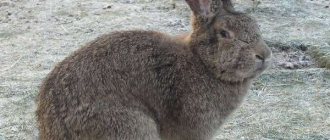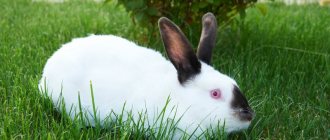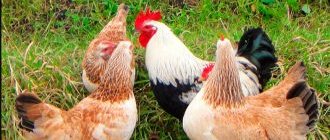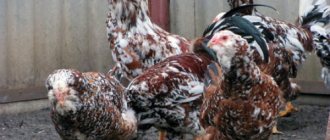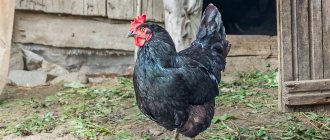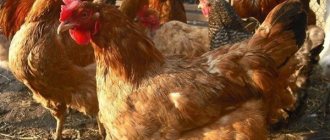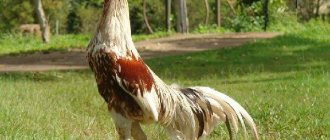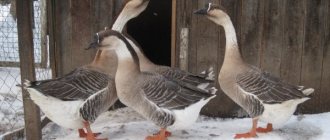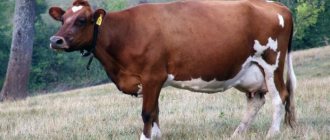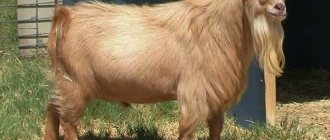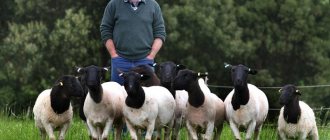Keeping Kholmogory geese at home
To successfully keep and breed Kholmogory geese, follow several rules:
Room dimensions. For keeping 1 adult bird at least 1 sq.m. area.
Walking. The size of the paddock should be more than 10 square meters. for one bird. But Kholmogory geese are very willing to walk. In the morning they go to pastures and return to the poultry house in the evening.
Litter. Dry and clean bedding is very important in wet weather and winter. In order not to spoil the valuable down, you need to change the bedding very often. 4.
Feeders. Wooden feeders are placed for grain mixtures, and metal feeders are used for wet mash.
Drinking bowls. Firmly attached drinking bowls should be large. So that there is enough water for everyone.
Nests. Due to the fact that the bird is large, the nests are made large.
Lighting. To increase egg production, it is necessary to extend daylight hours in the cold season. They do this by turning on the lamps from 6 am to 9 pm.
Ventilation
It is very important to ensure that there is always fresh air in the poultry house. Windows and doors cannot always cope with ventilation and then a ventilation system is installed.
Description of the breed
These poultry are divided into three types. They are divided according to the color of their plumage - it can be gray-piebald, gray and white. The characteristic features of the Kholmogory goose are an elongated neck (somewhat similar to the neck of a swan), a large head decorated with a bump on the forehead, a large, strongly curved, humped downwards and very strong beak, bright orange-yellow legs.
Kholmogory geese have a fold on the belly, a well-developed and deep chest, a wide, strong and heavy body, as well as a kind of “purse”, which is located under the neck of the bird.
The character of these domestic birds is calm. They get along well with other animals and can be in a large herd. Another feature of this breed is its high acclimatization abilities. It is thanks to this that they can be bred in any region of the Russian Federation.
Keeping Kholmogory geese
Kholmogors in a properly organized and equipped poultry house can withstand even severe cold weather. Almost any room can be used as a “dwelling”, both ready-made and refurbished, or freshly built specifically for birds.
Keeping geese
Kholmogory geese on the run
Arranging a goose barn - step-by-step instructions
Step 1. Planning the area
A square meter of area is planned for one individual, which means if you are going to have a dozen geese, you will need a room of at least 12 m². But this is if floor maintenance is planned. When keeping birds in cages or placing them in aviaries, this figure should be increased by about a third.
Gusyatnik
Small goose barn project
Goose barn, barn
Step 2. Letnik
Kholmogory geese may have not one, but two poultry houses. One summer one is a temporary structure, which is built as a lightweight version and consists of a wooden frame covered with mesh and film on top. The roof is made of slats, roofing felt is laid on top. A bird can spend 2/3 of the year in such a goose house.
Step 3. Winter road
For wintering, Kholmogors will need a more substantial room. The structure must be permanent, made of brick, concrete or blocks. The walls are plastered and whitewashed. All cracks are carefully sealed, since especially in winter the bird is afraid of drafts.
The room for keeping geese must be insulated
Winter keeping of geese
Step 4: Sanitation
The cleanliness of the premises for keeping geese is of great importance. The goose is a waterfowl, clean, and can die from dirt and infections. Purity is achieved by many factors. One of them is regular sanitation. The second is the quality, quantity and condition of the litter.
The main requirement for bedding is that it should not accumulate moisture and provide warmth in cold weather. In winter, peat (dry) or straw is suitable. In warmer months this may be sand or sawdust (fine wood shavings) covered with chopped straw.
Internal arrangement of the gooseneck
Step 5. Changing the litter
When keeping Kholmogory geese, the bedding is not subject to regular, complete changes. This is done as necessary once every 2.5-4 months. But it is necessary to remove the moistened litter, replacing it fragmentarily with dry litter, regularly, preferably daily.
Litter
When humidity is high, the feathers of geese become wet, spread out (ruffled) and cease to retain heat. Because of this, geese increase their feed consumption, bringing additional unplanned expenses to the owner. In addition, they can simply catch a cold and die. Therefore, it is better to stock up on high-quality bedding in sufficient quantities (about 40 kg will be required for one goose per year) so as not to skimp on the health of your pets.
Sawdust as bedding
Step 6. Food and water
The goose house contains the most important items for birds - feeders and drinkers. They must be present in sufficient quantities. The material from which they are made is also important, which depends on the type of food. For wet food, metal (stainless) containers are used. For dry bulk feed and hay, you can install wooden feeders. Water is also supplied in stainless steel.
Homemade feeder for geese
Steel feeder
Nipple drinkers
Step 7. Nesting
For successful nesting, laying and incubation of eggs in the goose coop, it is necessary to arrange nests. Also, for catching and jigging or moving birds, temporary trapping cages will be needed.
The nests are best built from wooden boxes, the dimensions of which are 70x70x40 cm. The front wall - the “entrance” - is made lower, at a level of 25 cm from the floor, so that the goose can easily get into the nest. Straw is laid in the box and burlap is placed on top. The fabric must be secured at the edges so that it does not slip on the straw. A wide oval depression is made in the middle so that the eggs do not roll and lie freely in one layer. Then you need to lightly sprinkle the entire structure on top with soft straw, and you can launch the goose into it.
Geese nest
Step 8. Crates for goslings
To receive goslings, you will need special boxes measuring 80x50x25 cm. The bottom must be wooden. The boxes will have to be heated, and this must be done from below. The structure is installed on the edges of two high stools, between which an electric heater with a temperature controller is placed. In the box for goslings, the temperature of the bedding should be about +30°C. Immediately install feeders along one side wall and drinkers opposite. Water is poured in a layer of 5 cm.
Brooder
Contents of goslings
Chick brooder
Breed characteristics
The birds of this breed got their name because of the place where they were bred. It was there that they were first distributed. Subsequently, over the course of several decades, different lines of Kholmogors were bred. Currently, the most popular are two species, which are the most productive and convenient for breeding.
Kholmogory geese of the first line are endowed with a long, humpbacked beak; very often birds of this species have sagging feathers on their wings. Geese have certain external characteristics that were obtained after merging with the Tula breed. Birds that belong to the second line have a slightly shorter beak than the geese of the first line, and it grows dark in color.
Kholmogory differs from any breed in the shape of its beak; it is curved down and has a characteristic hump. This part of the body gives individuals a special decorative appearance. Geese of the Kholmogory breed can be found in different shades; most often, livestock breeders breed white, gray and grayish-piebald specimens.
The birds of the mentioned breed got their name because of the place where they were bred
The legs and beak of heavies are bright orange. A description of the meat-greasy appearance of geese will not be complete without recalling the wide chest of the individuals and two fatty folds on the abdomen. In addition, at the age of five, a vertebrate animal with wings develops an impressively sized beak bump. They have a fold of skin under their beak. A description of the breed cannot be complete without mentioning the weight of the animals. Female Kholmogors are capable of reaching 7-8 kg and laying 20-25 eggs per year. There are specimens that lay up to 90 eggs per year. Males of this breed grow up to weigh up to 9 kg.
Kholmogory geese adapt well to any weather conditions; they are kept in large numbers in the southern regions of Russia. You can find small and large farms of individuals in central Russia and cooler regions.
Breeding Features
Hatching gosling chicks is not as easy as hatching chicks; it requires some patience and a certain skill. There are several rules, following which you can significantly make the life of the breeder easier and are guaranteed to receive about 15 Kholmogory chicks within three months.
Kholmogory geese - photo
- The ratio of ganders to geese in the herd is necessarily 1:4.
- The goose must be trained to lay eggs in its nest.
- Eggs for incubation can be stored for no more than two weeks before hatching.
- It is advisable to check the eggs for the presence of an embryo before hatching.
- It is necessary to ensure that the goose does not crush the eggs in the nest towards the end of incubation.
- Before laying eggs in the nest, conduct a “maternal instinct” test - the goose should remain on the clutch under any stress factor (fear) and not leave it.
Prices for ovoscope
Ovoscope
What is most important for the survival of newborn goslings is temperature. It is especially necessary to observe the prescribed temperature in the first three weeks of life. Kholmogory goslings
Kholmogory goslings
Table. Temperature regime for goslings.
| Age (in days) | Temperature (in °C) |
| up to 5 | 28 |
| from 6 to 10 | 24 |
| from 11 to 20 | 18 |
| from 21 to 30 | 15 |
High-quality food, fully consumed by the gosling, especially in the initial period of life, is the key to the development of a healthy individual with high productive qualities.
Goslings need to be fed properly
It is important to adhere to the routine and required frequency of feedings.
- In the first three days - 7 feedings.
- Until the end of the first week - 6.
- Until the end of the second week - 5.
- Until the end of the third week - 4.
The goslings' diet for the first three days consists of only four components.
- Boiled egg.
- Medium fat cottage cheese.
- Ground grain.
- Greenery.
Everything is crushed, mixed and given according to the norm. On the fourth day, root vegetables, cake and gradually mineral feed are added.
The first walk and trial grazing is recommended for baby geese at one week of age. First, the walking time needs to be dosed, starting from half an hour, and gradually increasing so that by two months the goslings graze all daylight hours, along with adults.
Goslings on a walk
In young Kholmogory geese, egg production can be very low - only about 15 eggs per year. For incubation, it is better to choose a goose with less weight so that it does not damage the eggs or hatched goslings.
Having accustomed the bird to rush to a certain nest, it is necessary to immediately select eggs from it and store them, placing them horizontally, at +15°C for no more than 15 days before incubation. If there are several geese, the eggs must be marked with the date of laying and the name (number) of the goose. It is recommended to turn stored eggs over to the opposite side every day.
Eggs need to be labeled
Eggs should be placed under all the geese of the flock at the same time. After the simultaneous birth of goslings, it is easier to form a flock of a new brood, monitor and care for it.
After the goslings have hatched, they must be removed immediately. It is best to let chicks near their mother on the fifth day, when they are stronger. It can easily overwhelm small goslings. The chicks quickly get used to their mother and learn to crawl under her wings. The gander approaches the children when they go for their first walk. If these measures and deadlines are observed, you can get a friendly goose family, the leader of which will protect and take care of all its members.
Brood of goslings
To assemble a good parent flock for independent breeding, you will need to differentiate ganders and geese not only by exterior breed characteristics, but also by weight.
Kholmogory Geese
You need to combine a gander with three geese into one nest. The main thing is to choose the right manufacturer. How to do it?
Pay attention to the cupric gland. It is located at the top of the tail, and a good manufacturer should have it double, or at least wide
Next you can look at the ends of the wings, where they form the so-called “scissors”
Thin intersecting feathers should converge evenly and be identical. Another sign is the beak, or more precisely, the number of tubercles on its upper part on the inside. The more there are, the more productive the male is. You can count the tail feathers; there should be at least 187 of them, and preferably 22. And finally, in a good breeding male, the fold on the left belly is longer than the fold on the right.
And, of course, for good productivity you definitely need proper maintenance and adequate feeding.
According to numerous reviews from poultry farmers who have been breeding various breeds of geese, Kholmogory are one of the best. They have a calm disposition, treat their young with care, gain weight regularly, practically do not get sick, and cause the breeder a minimum of trouble.
Kholmogory goose with brood
Basic rules for choosing good individuals
In order not to have the hassle of raising Kholmogory chicks on your own, you can immediately buy the required number of young individuals. The survival rate of goslings with good maintenance is very high. Here are a few rules for choosing good representatives of this breed:
- Pay attention to bird activity. Young individuals of Kholmogory are always on the move.
- Chicks should have a good appetite. If you give them food, then healthy goslings will immediately run up to eat it, but the weak ones will remain on the sidelines and will not show interest in food.
- Juveniles begin to fuss when there are loud sounds or noise nearby.
- The down of healthy individuals is shiny and evenly covers the body of the goslings. There should be no bare areas of skin.
- The belly of goslings should be smooth and round.
How to properly breed Kholmogory geese?
To obtain offspring from the Kholmogory breed of geese, it is necessary that there be at least 4 females in the herd per male. If there are more males, problems with the brood may arise. Eggs selected for hatching or incubation should be checked for fertilization.
Checking eggs for embryos
Geese have a strong maternal instinct. They incubate the eggs until the offspring hatch, and then care for them until the goslings get stronger, unless they are weaned off this. After all, some breeders specifically take away the eggs, preventing the goose from showing maternal qualities, which she may forget about with age. However, due to the fact that geese weigh a lot, you should not rely entirely on their efforts. Under their weight, they often crush the shell, destroying the offspring. Therefore, it is easier to breed the breed in an incubator or, at least, hatch half of the eggs artificially, and trust the rest to a caring goose.
Small goslings need to be closely monitored. The room temperature should be high
But, in addition, they need attention, help and proper feeding.
Little goslings can fall, but do not yet know how to get up, which can be fatal for them. In the first 3 days of life they are fed 6-7 times a day, and by three weeks they are transferred to four meals a day
In the first 3 days, it is important to feed chopped eggs, cottage cheese mixed with grains and chopped herbs. Root vegetables, cake, mineral feed are introduced from the 4th day of life
Food should be wet but loose
The sticky mixture can block the food passage and the bird will suffocate. Chicks can be released for walks from the 7th day of life, but for no more than 30 minutes. And they can walk all day only after 2 months of age.
Kholmogory geese are a popular meat breed in our country. The meat has a high taste, and in addition, the birds do not accumulate large amounts of fat, unlike other geese.
The popularity of Kholmogory is associated with its unpretentiousness, rapid growth and easy breeding.
Story
Kholmogory geese were bred in the 19th century in the settlement of the same name, Kholmogory, located in central Russia. Local residents received this breed as a result of crossing representatives of local and Chinese breeds of geese. By selecting the best representatives in the process of crossing, they obtained hardy large birds that easily adapted to any environmental conditions. In the 30s of the last century, the Kholmogory breed was considered lost, but experienced breeders were able to revive it. Nowadays these birds can be found in many households and farms.
Important! The main differences between representatives of this breed from other geese are the curved yellow-orange beak and the presence of a special fold under it, called
«
wallet
».
Diet during the reproductive period
If in winter Governor's geese can be fed once a day and only with hay and oats, then during egg laying it is impossible to get by with such a meager diet.
About a month before the planned breeding season, Governor's geese begin to be fed not only oats, but also other grains and legumes. The best option is compound feed for geese of egg-bearing breeds. This feed is already saturated with all the necessary vitamins and minerals.
If there is no specialized food, the geese are given ground grain of wheat, corn, barley, soybeans, and peas. At this time, alfalfa hay is better. When the grass begins to grow, the geese are switched to fresh green food.
Read also: Learning to make a quail cage yourself
This is especially true for raw dry wheat and legumes. Swelling in the crop, this food can clog the esophagus. If possible. It is better to boil the wheat.
In addition to grain and grass, Governor's geese need vitamin and mineral premixes. Pebbles are kept in a pen at all times.
Even if the Governor's goose is not languishing in the desire to hatch offspring, she will prefer to lay eggs in a secluded, quiet place where no one will disturb her. If there are no such places, they lay eggs anywhere. In this case, there is a high risk of losing products.
To make a nest for Governor breed geese, it is enough to make boxes with high walls and lay straw on the floor. Optimal option: the number of nesting sites exceeds the number of geese in the herd. If there are fewer nesting boxes, several geese may start laying eggs in the same box. In the case of collecting hatchery eggs, this situation does not matter
Knowing which eggs come from which goose is important if breeding work is being carried out
By spring, the geese were ripe and pleased with their eggs. Their eggs are very large, but they actually lay very few. It was enough for me though.
Disease Prevention
Kholmogory geese are birds with good immunity. But improper living conditions can lead to colds. Dirt and dampness can lead to the appearance of parasites. And unbalanced feeding will certainly lead to indigestion. For good growth and development of the bird, you must follow the following rules:
- Add shell rock, chalk, vitamins, and fish oil to the feed.
- Ensure regular poultry walking.
- Create a small pond for swimming (in summer).
- Frequent cleaning of the premises.
Productivity
The Kholmogory meat geese breed is highly productive. The live body weight of an adult bird is from 7 to 12 kg. Sometimes the largest ganders can grow up to 14 kg. A two-month-old gander weighs on average 4-4.5 kg.
Kholmogory geese reach full maturity when they reach 3 years of age.
At this age, maximum egg production and egg fertility are observed (about 80%). The disadvantage of the breed is its low productivity in terms of the number of eggs. In a year, an adult goose lays no more than 30-40 eggs.
Females with a small body weight lay eggs best.
The egg of a young bird weighs 130-140 grams, and that of a three-year-old goose weighs 180-190 grams. Their taste is low, so they are mainly used for incubation.
The advantages of the breed are:
- longevity. On average, Kholmogors live about 16-17 years;
- excellent return of down and feathers;
- profitability of breeding: meat, sale of hatching eggs and young stock.
Origin
Geese of the Kholmogory breed were bred by crossing the Arzomas breed with the Chinese.
There are 2 versions of the origin of the name of the birds. According to one, it is associated with the place where the birds were bred, on the other, with the place of their maximum distribution.
The first records mentioning Kholmogory geese date back to 1885. The breed has a history of more than 100 years , and during this time several lines of this bird have been created. Two of them are the most popular today. The first is geese, distinguished by a long beak with a hump and sagging feathers on the wings. A distinctive feature of the second group is a small dark-colored beak.
Both Kholmogory geese are valued for their high productivity and unpretentiousness.
Conditions of detention
Geese of the Kholmogory breed tolerate cold weather well, and if all the conditions are created correctly, they can easily survive a sharp drop in temperature. Any room for birds can be used, the main thing is that it is kept clean and dry, and there is also a ventilation system, but drafts are unacceptable. You need to build a poultry house at the rate of 1 square meter per head. With cellular content, the area must be increased.
Lightweight buildings are being built for the summer. A frame base is erected, then the mesh is stretched, and the film covers everything. The roof is constructed using slats. To keep birds in winter you need a more extensive poultry house. The walls are plastered and whitewashed; care must be taken to seal all cracks. A draft has a detrimental effect on the livestock, especially considering that in cold weather the geese will sit in the house for a long time.
In order for birds to grow healthy and strong, it is necessary to maintain cleanliness in the room; it depends on the quantity and quality of bedding material. The main thing is that the litter provides warmth in winter; for this you can use peat and straw. In the summer, the main thing is ease of cleaning; sand, sawdust and straw cuttings are best suited. You need to know that when hungry, geese can begin to peck at the bedding, which leads to digestive disorders, disease and mortality of the livestock.
During maintenance, the owner must promptly change the wet parts of the bedding for dry ones in order to prevent damage to the feather cover. Feathers become ruffled and stop retaining heat, which leads to colds. One bird will need a supply of about 40 kg of bedding materials.
Kholmogory goose
A sufficient number of feeders, drinkers, and nests are placed in the poultry house. Metal containers are suitable for wet food, and dry grain mixtures can be poured into wooden bowls. Feeders are fixed at a height of half a meter above the floor for adult livestock.
Feeding rules
The weight gain of birds, their egg production, and the production of healthy livestock depend on the correct diet. If breeding occurs correctly, the geese begin laying eggs in February. One bird should receive:
- grain flour feed - 1.6 kg;
- whole grain - 50 grams;
- chopped hay - 150 g;
- root vegetables - 300–500 g.
Fodder chalk and shell rock are placed in separate containers. Dry food can be steamed, and root vegetables can be used to make mash. Grain mixtures are given in the evening and morning, and during the day the birds are fed mash.
Care
The future Kholmogor breeder will need to acquire patience and dexterity, as well as become familiar with some rules, the observance of which is extremely important:
- the parent flock consists of one gander and four geese;
- females are taught to lay eggs in their own nest;
- incubation material is not stored for more than two weeks;
- all egg products undergo ovoscopy;
- the future hen is initially placed on false eggs to see if she will not leave the nest, even if stressful situations arise.
After hatching, the young can be left with the goose, and when artificially hatching, the chicks are placed in a box over which lamps are installed or a heating pad is placed. The first few days you need to monitor the goslings, because... they cannot get up on their own if they fall, and staying in this position for a long time is fatal.
Goslings must be provided with high-quality feed. In the first days they are given boiled eggs, mashed, mixed with chopped herbs. Young animals are fed at least 7 times a day and gradually reduce the number of feedings to 4 times by the third week of life.
Tula
This breed was bred back in the 17th century, but not for meat, but for fighting purposes. Over time, it was noticed that, in addition to these qualities, the bird can be used for other purposes due to its excellent productivity. In addition, they did not require serious care; they adapted to new places very quickly. A distinctive feature is the hump above the beak. Productivity:
- egg production – up to 25 eggs, low;
- survival rate is high, since females have not lost their mother hen instinct and take excellent care of their babies;
- in 4 months, the goose gains weight from 5 to 6 kg, depending on gender, sometimes this weight reaches 9 kg.
Hatching egg
A little about the incubation process.
The shape of the eggs should be smooth, without cracks or protrusions; their shells cannot be washed, so keep the nests clean.
Since goose eggs are quite large, you need to turn them regularly for the first 2 weeks. Otherwise, the egg does not have time to cool well, and gas exchange inside is disrupted. The hatched goslings must be placed in a box with sides no lower than 25 cm, and heated with a lamp or heating pad.
In the first days of life, the temperature of the heating pad is 24-28 degrees, by the age of three weeks it drops to 18.
Breeding nurseries and prices
Thanks to rapid acclimatization and unpretentiousness, Kholmogory are distributed almost throughout Russia. They are bred in Udmurtia, in the Oryol, Voronezh, Bryansk, and Kursk regions.
If you decide to buy Kholmogory goose, it is important to choose a trusted supplier with good reviews from farmers. Here are several farms that offer goslings and adults of the Kholmogory breed:
Here are several farms that offer goslings and adults of the Kholmogory breed:
Average prices on farms are:
- Eggs for incubator – from 180 rub.
- Daily allowance for babies - from 200 rub.
- 4-month-old goslings – from 2000 rub.
- Adults – from 3500 rub.
Description of the breed
There are two populations of Kuban geese
- Kuban gray;
- Kuban white.
The second population was bred by crossing Vishtines geese with the Gorky and Emdem breeds. But, nevertheless, the first population was much better, and we will talk about it.
The Kuban goose belongs to the middle type. It is distinguished by a large head with a red bump at the base of the beak, and an oblong curved neck.
It has an ovoid, slightly raised body with a round chest. The legs are small and dark in color, as is the beak.
The color is usually brown or gray with white. A distinctive feature of Kuban geese is the brown line, from the beak to the back.
Approximate weight of Kuban breed geese.
| Age | Gander | Goose |
| 1 day | 200g | 180g |
| 1 month | 2kg | 1.8kg |
| 2 months | 3kg | 2.8kg |
| 4-5 months | 5-6kg | 4.5-5.5kg |
Like all breeds, Kuban geese have their pros and cons.
Advantages:
- fairly high egg production;
- unpretentiousness;
- tasty and nutritious meat;
- large eggs, weighing 140-150g.
Flaws:
- small live weight;
- lack of maternal instinct in females.
Peculiarities of reproduction, care of young animals
For successful fertilization, it is necessary to organize families of 4 geese and 1 gander. The best hatching rates are observed in medium-sized birds.
The mating season for geese begins in the fall, and birds lay eggs from February to April. For successful incubation, birds need to arrange a nest in the form of a box. It is enough to put straw in it, and the hen will insulate it herself - with her own down. Under 1 goose you can put 10 - 12 eggs.
Attention! To prevent the death of the embryos, the owner must periodically turn the eggs himself. Chicks appear 28 days after the start of brooding
On the first day, you need to provide the goslings with constant lighting. The air temperature in the room with young animals must correspond to the following indicators:
The chicks appear 28 days after the start of brooding. On the first day, you need to provide the goslings with constant lighting. The air temperature in the room with young animals must correspond to the following indicators:
- 1 – 3 days – +25 – +28;
- 4 – 6 days – +24 – +25;
- 6 – 8 days – +23;
- then a gradual decrease to +18.
Young geese can walk outside from 7 days old if the weather is warm and dry. You need to start feeding the chicks immediately after they dry out. Nutrition principles:
- 7 times a day up to 4 days.
- 4 times a day from 4 to 30 days.
- The first feedings are finely chopped eggs and cottage cheese.
- From the 2nd day, ground grains and herbs are added to the menu.
- From the 7th day, the diet is enriched with root vegetables, cake, and vitamin supplements.
- From 2 weeks, chopped fresh vegetables are introduced into food.
- The food is given moist, but not sticky, so that the food does not block the birds' respiratory passages.
- From 30 days, geese can eat with the rest of the family.
Kholmogory food
The diet of Kholmogory geese differs little from the diet of other breeds. The main feed is grain mixture and succulent (grass, roots and tubers), which will be used to feed the geese and all sorts of table scraps.
To raise healthy goose offspring, you should correctly correlate feeding characteristics with the season and egg production . In February, the geese begin to lay eggs, and from this moment on feeding needs to be monitored.
As a standard, 1 adult should eat of complete feed per day In a separate feeder you can put chalk and crushed gravel for strong egg shells.
To prevent vitamin deficiency, vitamin-rich herbal flour from legumes, red carrots or pumpkin is added to the diet. For clarity, here is a table where the norm is indicated in grams per head per day:
| Type of feed | Winter spring | Summer autumn |
| Whole barley, millet or oats | 110 | 80 |
| Bran or ground grain | 130 | 60 |
| Cake | 20 | 10 |
| Dry animal feed | 20 | 10 |
| Potatoes and other root vegetables | 200 | — |
| Dry hay | 60 | — |
| Fresh herbs | — | 500 |
| Minerals (chalk, bone meal) | 8 | 6 |
| Salt | 2 | 2 |
| Total | 550 | 668 |
Ganders experience weight loss during the breeding season, so you need to support them with food of animal origin : you can give 100g of cottage cheese, 2-3 raw eggs, a tablespoon of fish oil or meat and bone meal.
Feeding the young
In the first days, small goslings are fed boiled eggs and chopped grain. Gradually, cake, cottage cheese and chopped grass are added to the diet.
After a week, the babies can be released for walking and fed like adults. Observe the frequency of feeding - for the first 3 days of life, you need to feed the goslings 6-7 times a day , by 3 weeks the frequency decreases to 4 times.
Important! Make sure that the food (especially mixed food) is not sticky. Sticky foods can clog babies' nasal passages.

